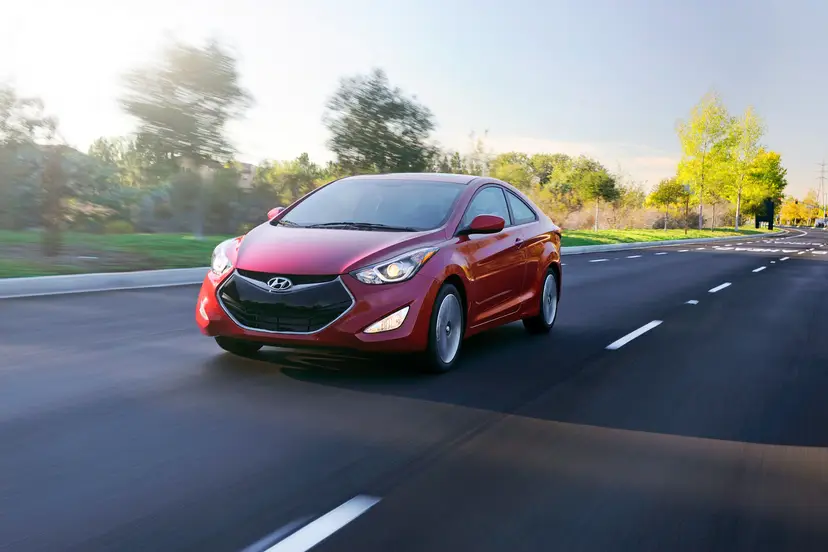
Compact crossovers are hot for good reasons: They provide great functional space, a higher riding position, decent gas mileage and a few truck-like characteristics without all of that pesky truckiness.
Most have smooth car-like rides out on the road due to their unibody construction, and there are plenty for consumers to choose from: the Ford Escape, the Honda CR-V, the Toyota Rav4, to name a few.
Some, like the Escape and Jeep Patriot, lean toward an SUV; others, like the CR-V and Nissan Rogue, feel more like a car.
The 2011 Hyundai Santa Fe falls somewhere in between, and not in any of the good ways. It was refreshed for the 2010 model year and will be replaced in the coming year or so. Good.
First, the Santa Fe is just homely looking. It’s as if Hyundai was trying out a few design languages at the same time. The front end is curvy and round, while the back end grows bigger — a product of that rising belt line and flared fenders. Its proportions look off-balance.
Hyundai has put out some striking vehicles recently, and those cars, namely the Elantra and Sonata, make the Santa Fe look so unimpressively normal. It may not be entirely fair to draw that comparison, but who wants to catch a glimpse of HDTV and then go back to black-and-white?
Not everything is bad on this vehicle. The lines of sight are good all the way around — one of the benefits of a compact crossover.
Comfort and function
The interior is comfortable, and it comes with a slew of features. Hyundai’s use of blue backlighting on everything from the instrument panel to the cup holders makes the cabin extremely appealing.
There’s also plenty of room inside, which is why so many crossovers are so popular. You can carry five people very comfortably as well as all of their stuff in the easy-to-load cargo area.
There are also all the luxury features so many people want, such as navigation, backup camera and Bluetooth connectivity. For this model year, Hyundai also added an optional 605-watt Infinity Logic 7 Surround Sound stereo system; it’s excellent.
This vehicle, however, needs a good stereo because it’s incredibly noisy on the road. Road and wind noise fill the cabin. One unscientific test I use on a vehicle is to count how many times I adjust the volume on my commute to work. A perfect score would be zero adjustments, simply playing the stereo from the last time I drove it. The Santa Fe scored an 8.
Truckish performance
Interior noise aside, the Santa Fe performed well on the road.
The ride is feels more truckish than carlike. The bumps are hard, and on the highway, I never felt confident in this vehicle. The power-assisted rack-and-pinion steering was fine in city driving, with a nice taut feel, but on the highway, it was too sensitive, which leads to lots of overcorrecting.
There’s nothing bad to say about the powertrains. The 3.5-liter V-6 matched to a six-speed automatic transmission was excellent. Unlike many crossovers, which have transmissions that race to sixth gear to improve mileage by sacrificing performance, the Santa Fe seemed to pace itself, providing good acceleration, highway cruising and everything in between.
It also gets good gas mileage, hitting 20 mpg in the city and 26 mpg on the highway. A 2.4-liter powertrain that produces 175 horsepower will get you two more miles per gallon on the highway, which makes it almost irrelevant. Why get the four-banger when the six provides 111 more horsepower and gets the same city mileage?
Safety galore
Hyundai also packs the Santa Fe with lots of safety features, such as six air bags, electronic stability control, tire pressure monitoring and brake assist, which will apply maximum brake force if it detects an emergency.
All in all, the Santa Fe isn’t a bad vehicle. But Hyundai has raised the bar on itself, and when you get into this vehicle, there’s very little that makes you say, “Wow, I really want one of these.”
Hyundai doesn’t even feel like the value vehicle in this segment, which is ground the carmaker often holds over the competition. It takes $23,000 to get a base model with an automatic transmission, and the top-of-the-line model cost more than $30,000.
With so much attention being paid to compact crossovers, the expectation has become that every vehicle needs to be the very best in the bunch.
The Santa Fe is not even in the top five.
sburgess@detnews.com (313) 223-3217














































